Photographing Huizhou Ancient Buildings: Tips for Stunning Shots
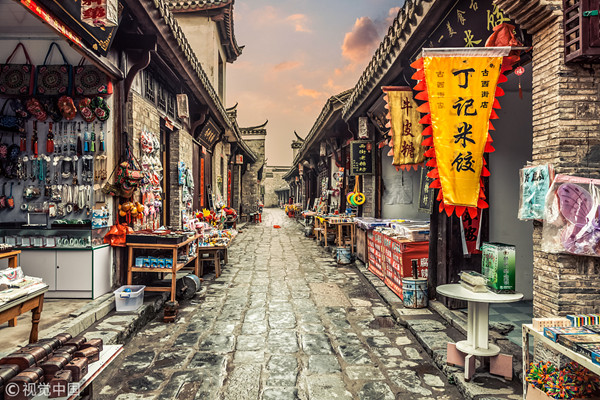
An Essential Guide to Visiting Huizhou Ancient Buildings
Nestled in the heart of the picturesque Anhui Province, Huizhou Ancient Buildings stand as timeless testimonies to China’s rich cultural heritage. This enchanting area, often regarded as one of the best-preserved ancient towns in the country, invites international travelers to step back in time and immerse themselves in the architectural wonders of the Ming and Qing Dynasties.
As you wander through the cobblestone streets, you’ll find yourself surrounded by elegant residences adorned with intricate wood carvings and iconic white walls contrasted against black tiles. Each structure tells a story, echoing the lives of the Huizhou people who flourished here. The unique architectural style, characterized by its grand facades and serene courtyards, showcases the exquisite craftsmanship that has been passed down through generations.
Beyond mere aesthetics, the Huizhou Ancient Buildings are deeply intertwined with the region’s rich cultural tapestry, reflecting the philosophies, arts, and traditions that have shaped Huizhou into a vibrant hub of Chinese culture. From the dramatic stone archways that frame the entrances to the charming teahouses where locals gather, every corner of this historic town offers a new perspective on the past.
Whether you are an architecture enthusiast, a history buff, or simply seeking a serene escape, Huizhou Ancient Buildings promise an unforgettable journey through time. Let the fusion of beauty and history captivate your senses as you explore one of China’s most compelling ancient cities.
In This Guide
- An Essential Guide to Visiting Huizhou Ancient Buildings
- The Rich History and Legends of Huizhou Ancient Buildings
- Main Highlights: What You Absolutely Can’t Miss
- Planning Your Visit: A Practical Guide
- Tickets: Prices, Booking, and Tips
- How to Get There: A Complete Transportation Guide
- Local Cuisine and Accommodation Nearby
- Frequently Asked Questions
- Final Thoughts on Your Trip
The Rich History and Legends of Huizhou Ancient Buildings
Nestled in the heart of Anhui Province, Huizhou Ancient City stands as a testament to China’s rich architectural heritage, with its ancient buildings narrating stories that span centuries. Dating back to the Ming (1368-1644) and Qing (1644-1911) Dynasties, these structures embody the traditional Han Nationality style and reflect the profound cultural legacy of the region.
As you wander through the cobbled streets of Huizhou, you’ll be captivated by the intricate craftsmanship that characterizes the local architecture. The iconic white walls adorned with black tiles and exquisite carvings create a stunning visual contrast against the backdrop of serene landscapes. These structures are not merely buildings; they are the physical manifestations of Huizhou culture, a significant branch of Chinese civilization that has influenced various fields, from philosophy to the arts.
One of the most remarkable features of Huizhou architecture is its harmonious integration with nature. The buildings are designed to complement their surroundings, often incorporating elements of the picturesque landscape into their design. This aesthetic philosophy can be traced back to the teachings of Xin An Rationalism, a movement that emphasizes morality and the importance of learning—a principle that Huizhou scholars have upheld for over six centuries.
The Huizhou style of architecture is also notable for its functionality. The layout of the city reflects a meticulous planning process, where residential areas are seamlessly intertwined with public spaces such as teahouses, theatrical stages, and stone archways. These communal areas not only served practical purposes but also fostered social interactions among residents, reinforcing the sense of community that is a hallmark of Huizhou culture.
Among the architectural highlights is the Xuguo Stone Archway, a striking structure that stands as a symbol of the city’s historical significance. This archway, along with others scattered throughout the ancient city, showcases the artistry of Huizhou builders and their ability to merge beauty with structural integrity. Each archway tells a story, often commemorating noteworthy figures or events from the region’s past, enriching the visitor’s experience with layers of historical context.
The legends of Huizhou’s ancient buildings are as captivating as their architectural beauty. Tales of scholars, merchants, and artisans who once frequented these streets abound, painting a vivid picture of a vibrant community steeped in tradition. It is said that Hui merchants, known for their shrewdness and business acumen, would often gather in these spaces to discuss trade, share knowledge, and celebrate cultural festivities. These gatherings not only fostered economic growth but also played a crucial role in the preservation and evolution of Huizhou culture.
Visiting Huizhou Ancient City is akin to stepping into a living museum where history is not confined to textbooks but is woven into the very fabric of the environment. The grandeur and elegance of the ancient buildings invite international travelers to explore the rich narratives that have shaped this iconic destination. As you delve into the history and legends of Huizhou’s architecture, you will gain a deeper appreciation for the cultural significance that these structures hold, making your journey through this ancient city an unforgettable experience.

Huizhou Ancient Buildings.
Main Highlights: What You Absolutely Can’t Miss
Huizhou Ancient Buildings enchant visitors with their timeless beauty and rich cultural heritage. As you stroll through this historical town, here are the key highlights that you absolutely cannot miss:
1. Xuguo Stone Archway
One of the most iconic structures in Huizhou, the Xuguo Stone Archway stands as a testament to the architectural prowess of ancient artisans. With its intricate carvings and imposing presence, this archway not only marks a grand entrance to the old town but also showcases the artistry typical of the Ming and Qing Dynasties. Be sure to capture some photographs here, as the archway offers a stunning backdrop against the cobbled streets.
2. Huizhou State Office
A centerpiece of the ancient city, the Huizhou State Office has served as an administrative hub for over a thousand years. Its historical significance is matched by its architectural grandeur, featuring traditional Huizhou elements such as grey bricks and whitewashed walls. Visitors can explore the surrounding area to appreciate the harmonious layout that reflects the town’s historical importance.
3. Teahouses and Traditional Stages
Wander through the narrow lanes, and you’ll discover charming teahouses that invite you to experience local culture. Enjoy a cup of fragrant tea while absorbing the ambiance of the old city. Nearby, traditional stages often host performances of Hui Opera, an art form that combines local musical traditions and storytelling. If you’re lucky, you might catch a live show that immerses you in the rich history of Huizhou culture.
4. Ancient Residential Dwellings
The well-preserved residences throughout the city exemplify the unique Huizhou architectural style. Look out for the characteristic white walls adorned with black tiles, often embellished with exquisite carvings that depict local legends and nature. These homes provide a glimpse into the lives of their historical inhabitants and are a must-see for anyone interested in traditional Chinese architecture.
5. Cobbled Streets and Scenic Bridges
The winding cobbled streets of Huizhou are as much a highlight as the buildings themselves. These paths, flanked by ancient structures, lead you through a living museum of history. Along the way, you’ll encounter beautiful stone bridges that connect various parts of the town, offering picturesque views and perfect spots for reflection and photography.
6. Cultural Exhibits and Museums
Don’t miss the opportunity to visit local museums that delve deeper into Huizhou’s history and culture. Exhibits often feature artifacts from the Ming and Qing Dynasties, showcasing the region’s rich artistic and intellectual heritage. These museums provide context to the architecture and art you’ll see throughout the town, enhancing your understanding of Huizhou’s significance in Chinese culture.
7. The Scenic Surroundings
Lastly, take a moment to appreciate the breathtaking natural landscapes that encircle Huizhou Ancient City. The striking juxtaposition of high peaks and serene waters adds to the charm of the area, making it an ideal spot for leisurely walks and contemplative moments. The beauty of the environment complements the historical architecture, creating a unique experience that is both visually and emotionally resonant.
Exploring Huizhou Ancient Buildings offers an enriching experience filled with beauty, culture, and history. Each highlight invites you to dive deeper into the stories that shaped this remarkable city, making your visit truly unforgettable.
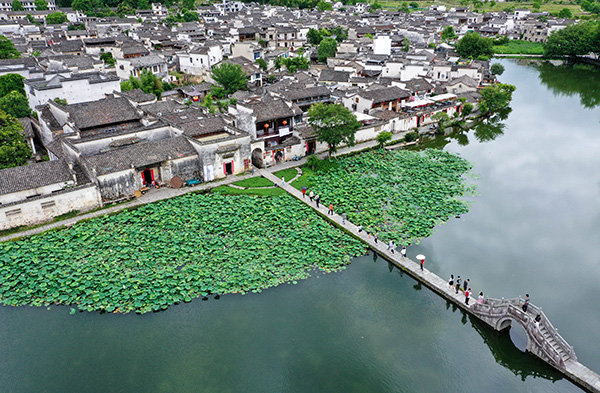
Huizhou Ancient Buildings.
Planning Your Visit: A Practical Guide
Visiting Huizhou Ancient Buildings offers an enchanting peek into China’s rich architectural heritage and Huizhou culture. To make the most of your trip, here’s a practical guide designed for international travelers.
When to Visit
The ideal time to explore Huizhou Ancient City is during the spring (March to May) and summer (June to August) months, when the weather is pleasant and the surrounding landscapes are lush and vibrant. Avoid the winter months if you prefer milder temperatures, as it can get quite cold.
Getting There
Huizhou Ancient City is located in Shexian County, Huangshan City, Anhui Province. The nearest major city is Huangshan, which is well-connected by train and bus services from major cities like Shanghai, Beijing, and Hangzhou.
-
By Train: High-speed trains from major urban centers arrive at Huangshan North Railway Station. From there, local buses or taxis can take you directly to Huizhou Ancient City.
-
By Air: The nearest airport is Huangshan Tunxi International Airport, which has domestic flights from cities like Shanghai, Beijing, and Guangzhou. You can arrange for a taxi or shuttle service from the airport to the ancient city.
Ticket Information
Entry to Huizhou Ancient City is free, which is a significant advantage for budget travelers. However, visiting the Huizhou State Office requires a ticket priced at 48 RMB. Ensure you carry some cash, as not all vendors may accept credit cards.
Opening Hours
The site is open to visitors daily from 07:00 AM to 05:00 PM. Plan your visit to allow at least 2 to 3 hours to fully appreciate the architecture and atmosphere.
What to See
As you wander through Huizhou Ancient City, take time to explore the following highlights:
-
Xuguo Stone Archway: This stunning structure represents the artistic craftsmanship of the era and serves as an iconic symbol of Huizhou architecture.
-
Residential Dwellings: Marvel at the beautifully preserved residences that showcase the distinctive Huizhou style, characterized by white walls and black tiles adorned with intricate carvings.
-
Theatrical Stages and Teahouses: Experience local culture by visiting traditional teahouses or catching a performance at a historical theatrical stage.
-
Cobblestone Lanes: Stroll along the winding cobbled streets that tell the story of centuries past, where each corner reveals a new piece of history.
Tips for Your Visit
-
Dress Comfortably: Wear comfortable shoes as you will be walking a lot on uneven surfaces.
-
Stay Hydrated: Bring a water bottle, especially during the warmer months, as you’ll want to stay refreshed while exploring.
-
Photography: The picturesque scenery and unique architecture are perfect for photography enthusiasts. Make sure to capture the beauty of Huizhou’s ancient buildings.
-
Local Cuisine: Don’t miss out on trying local dishes at nearby restaurants. Huizhou cuisine is known for its unique flavors and fresh ingredients.
-
Cultural Etiquette: Be respectful when visiting places of cultural significance. Always ask for permission before taking photos of locals.
Conclusion
With its rich history and stunning architecture, Huizhou Ancient Buildings is a must-visit for any traveler interested in China’s cultural heritage. By planning ahead and being mindful of local customs, you can ensure a memorable experience in this enchanting ancient city. Happy travels!
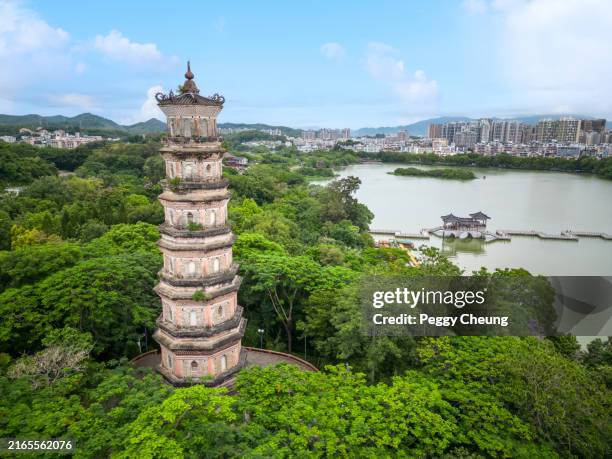
Huizhou Ancient Buildings.
Tickets: Prices, Booking, and Tips
When planning your visit to the enchanting Huizhou Ancient Buildings, understanding the ticketing process and pricing is essential for a smooth experience.
Ticket Pricing
Visiting Huizhou Ancient City is quite budget-friendly. Admission to the ancient city itself is free, which allows you to wander through its winding cobbled lanes and admire the stunning architecture without any entry fee. However, if you’re interested in exploring the Huizhou State Office, a small entrance fee of 48 RMB is required. This historic site provides an in-depth look into the region’s rich cultural heritage and is well worth the nominal charge.
Booking Tickets
For most visitors, tickets can be purchased on-site without the need for advance booking. This flexibility allows you to explore at your own pace and adjust your plans based on your travel itinerary. However, if you wish to visit other attractions in the area or if you’re part of a larger group, consider contacting local tour operators who can assist with tailored packages and guided tours that include Huizhou Ancient City.
Tips for Your Visit
-
Timing Your Visit: The best times to explore are during the spring and summer, when the weather is pleasant, allowing for a comfortable stroll through the city. Aim to set aside 2 to 3 hours to fully appreciate the ancient structures and the unique ambiance.
-
Opening Hours: The ancient city is open daily from 7:00 AM to 5:00 PM. Arriving early can help you avoid crowds and enjoy the serene morning atmosphere.
-
Transport Options: Huizhou Ancient City is accessible by various means of transport. If you’re coming from nearby cities like Huangshan, consider taking a high-speed train, which is both quick and convenient.
-
What to Bring: Wear comfortable shoes, as the cobbled streets can be uneven. A camera is a must to capture the beauty of the intricate carvings and the harmonious blend of the ancient architecture with the natural surroundings.
-
Local Insights: Engaging with local guides can enhance your experience, providing deeper insights into the history and significance of the buildings. They can also recommend hidden gems within the city that are not on the typical tourist path.
By keeping these tips in mind, your visit to Huizhou Ancient Buildings will be both enriching and enjoyable, offering a glimpse into the fascinating tapestry of Chinese culture and history.
How to Get There: A Complete Transportation Guide
To experience the enchanting beauty of Huizhou Ancient Buildings, planning your journey effectively is key. This guide will help you navigate your way to this historical gem nestled in the heart of Shexian County, Huangshan City, Anhui Province, China.
Getting to Huizhou Ancient Buildings
By Air
The nearest major airport to Huizhou Ancient City is Huangshan Tunxi International Airport (TXN). This airport offers both domestic and limited international flights. Upon arrival, you have several options to reach Huizhou:
- Taxi: Taxis are readily available at the airport. The drive to Huizhou Ancient City takes approximately 30 minutes and costs around 100 RMB.
- Airport Shuttle: Look for airport shuttle services that connect to Huangshan City. From there, you can take a taxi or public transport to Huizhou.
By Train
For those traveling from major cities, taking a train is a comfortable and scenic option:
- High-Speed Train: The high-speed rail network in China makes it easy to reach Huangshan from cities like Shanghai, Beijing, and Hangzhou. The nearest train station to Huizhou Ancient City is Huangshan North Railway Station.
- From Huangshan North Station to Huizhou: You can take a taxi (approximately 50 RMB) or a local bus which can be a more economical option.
By Bus
If you prefer traveling by bus, you can catch a long-distance bus from various cities:
- From Hangzhou or Nanjing: Direct buses run regularly to Shexian County. The bus journey can take around 4-6 hours. Once you arrive at the Shexian Bus Station, you can either walk (about 20 minutes) or take a short taxi ride to the Ancient City.
Local Transportation
Once in Huizhou Ancient City, the best way to explore is on foot. The cobblestone streets are pedestrian-friendly, allowing for leisurely strolls through the historical architecture. However, if you need to travel further afield:
- Taxis and Ride-Hailing Apps: Taxis are available, and popular ride-hailing apps like Didi can be used for convenient transport around the area.
- Bicycles: Some local shops offer bicycle rentals, providing a fun way to explore the surroundings at your own pace.
Tips for Your Journey
- Language: While major transportation hubs may have some English signage, it’s advisable to have your destination written in Chinese characters to show taxi drivers or bus staff.
- Cash: While mobile payments are common in China, carrying some cash (RMB) for small purchases or local transport is beneficial.
- Local Time: Huizhou is in the China Standard Time zone (UTC+8). Ensure that you adjust your travel plans accordingly.
By following this transportation guide, you’ll be well-equipped to embark on your adventure to Huizhou Ancient Buildings, where the rich heritage and stunning architecture await you. Enjoy your journey!
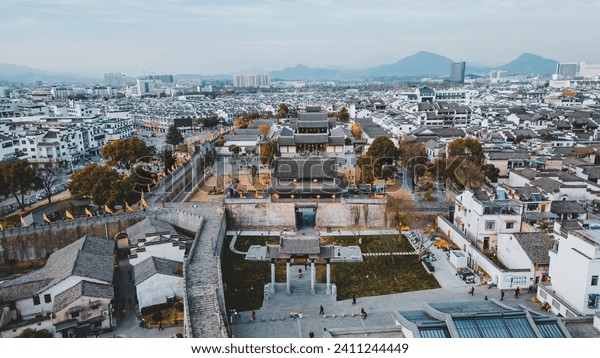
Huizhou Ancient Buildings.
Local Cuisine and Accommodation Nearby
Exploring Huizhou Ancient Buildings is not just about the architecture; it’s also an opportunity to indulge in the rich culinary traditions of the region and find comfortable accommodations that enhance your travel experience.
Local Cuisine
When visiting Huizhou, don’t miss the chance to savor the local delicacies that reflect the area’s unique cultural heritage. Here are some must-try dishes and where to find them:
-
Hui Cuisine: Renowned for its emphasis on flavor and variety, Hui cuisine features dishes such as Braised Bamboo Shoots and Stir-Fried Eel. For an authentic experience, head to Yuanhua Restaurant (园华大酒店), where you can enjoy a range of traditional Hui dishes in a cozy setting.
-
Dumplings and Buns: A visit to Huizhou Ancient City wouldn’t be complete without trying the local dumplings known as Xiaolongbao. Da Dong Dumpling House (大东包子铺) is famous among locals and tourists alike for its freshly made dumplings bursting with flavor.
-
Tea Culture: Huizhou is also known for its tea, particularly Keemun Black Tea. You can experience this at Tea House of Huizhou (徽州茶馆), where you can sip on a variety of teas while enjoying the serene atmosphere.
Accommodation
Finding the right place to stay can greatly enhance your visit. Here are some highly recommended accommodations near Huizhou Ancient Buildings:
-
Huizhou Ancient City Hotel (徽州古城酒店): Located just a short walk from the ancient buildings, this hotel offers a blend of traditional architecture and modern comfort. Guests can enjoy spacious rooms and a delightful garden, perfect for unwinding after a day of exploration.
-
Jinjiang Inn (锦江之星): A reliable choice for budget travelers, this hotel provides clean, comfortable rooms with essential amenities. Its proximity to the ancient city makes it a convenient option for those wanting to explore the area.
-
Laojie Hotel (老街酒店): This charming boutique hotel reflects the architectural styles of the region, offering an immersive experience. With personalized service and a lovely courtyard, it’s an excellent spot for travelers seeking a more intimate stay.
-
Huangshan Huizhou International Hotel (黄山徽州国际大酒店): For those looking for a bit more luxury, this hotel combines modern facilities with traditional Huizhou aesthetics. It features an on-site restaurant serving local cuisine and is conveniently located near the ancient city.
Exploring Huizhou Ancient Buildings offers a glimpse into the past, but with delicious food and comfortable accommodations, your journey can be both enriching and enjoyable. Immerse yourself in the local culture and enjoy everything this historic area has to offer!
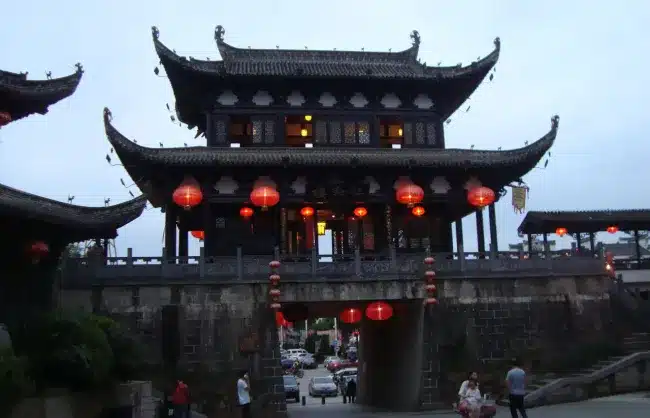
Huizhou Ancient Buildings.
Frequently Asked Questions
Frequently Asked Questions about Huizhou Ancient Buildings
-
What is the best time to visit Huizhou Ancient City?
The ideal time to explore Huizhou Ancient City is during spring (March to May) and summer (June to August) when the weather is pleasant, allowing you to fully enjoy the outdoor sights and charming architecture. -
How much does it cost to enter Huizhou Ancient City?
Admission to Huizhou Ancient City is free, but if you wish to visit the Huizhou State Office, there is a nominal fee of 48 RMB. -
How long should I plan to spend at Huizhou Ancient City?
A visit typically takes around 2 to 3 hours. This allows enough time to wander through the cobbled streets, admire the ancient architecture, and soak in the rich culture of the area. -
Are there any guided tours available?
Yes, there are various guided tours available that can enhance your experience. These tours often include knowledgeable guides who can provide insights into the history and significance of the buildings and culture. -
What should I wear when visiting Huizhou Ancient City?
Comfortable walking shoes are recommended, as you’ll be exploring cobblestone streets. Dressing in layers is advisable, especially if you’re visiting in spring or autumn, as temperatures can fluctuate. -
Can I find food and refreshments in the area?
Yes, there are several teahouses and local eateries within Huizhou Ancient City, where you can experience traditional Huizhou cuisine and refreshments while taking a break from your exploration. -
Is Huizhou Ancient City accessible for those with mobility issues?
While many areas are walkable, the ancient cobbled streets can be uneven and may pose challenges for those with mobility issues. It’s advisable to check in advance regarding specific accessibility options. -
How do I get to Huizhou Ancient City from nearby cities?
Huizhou Ancient City is easily accessible by public transportation. You can take a bus or high-speed train to Huangshan City, followed by a local taxi or ride-sharing service to the ancient city itself.
Final Thoughts on Your Trip
As you conclude your journey through the enchanting Huizhou Ancient City, take a moment to reflect on the rich tapestry of history and culture that surrounds you. This remarkable destination, with its well-preserved Ming and Qing architecture, offers a unique glimpse into the past, where every cobblestone and intricately carved stone tells a story of generations gone by.
Walking through the narrow lanes, you’ll find yourself immersed in the essence of Huizhou culture, a vital branch of Chinese heritage characterized by its philosophy, art, and community spirit. The harmonious blend of nature and architecture here is nothing short of breathtaking, with white walls and black tiles framing a picturesque landscape that seems to have been untouched by time.
Whether you’ve marveled at the grand stone archways, enjoyed a tranquil moment in a teahouse, or interacted with the warm-hearted locals, Huizhou has a way of etching itself into your memory. As you prepare to leave, carry with you not just the photographs and souvenirs, but the stories and experiences that have enriched your understanding of this ancient civilization.
Make sure to take a moment to savor the lingering charms of Huizhou, as they will undoubtedly inspire your future travels. From its ancient buildings to the vibrant culture that flourishes within, Huizhou Ancient City is more than just a destination; it is a journey into the heart of Chinese history, waiting to be explored and cherished. Safe travels!